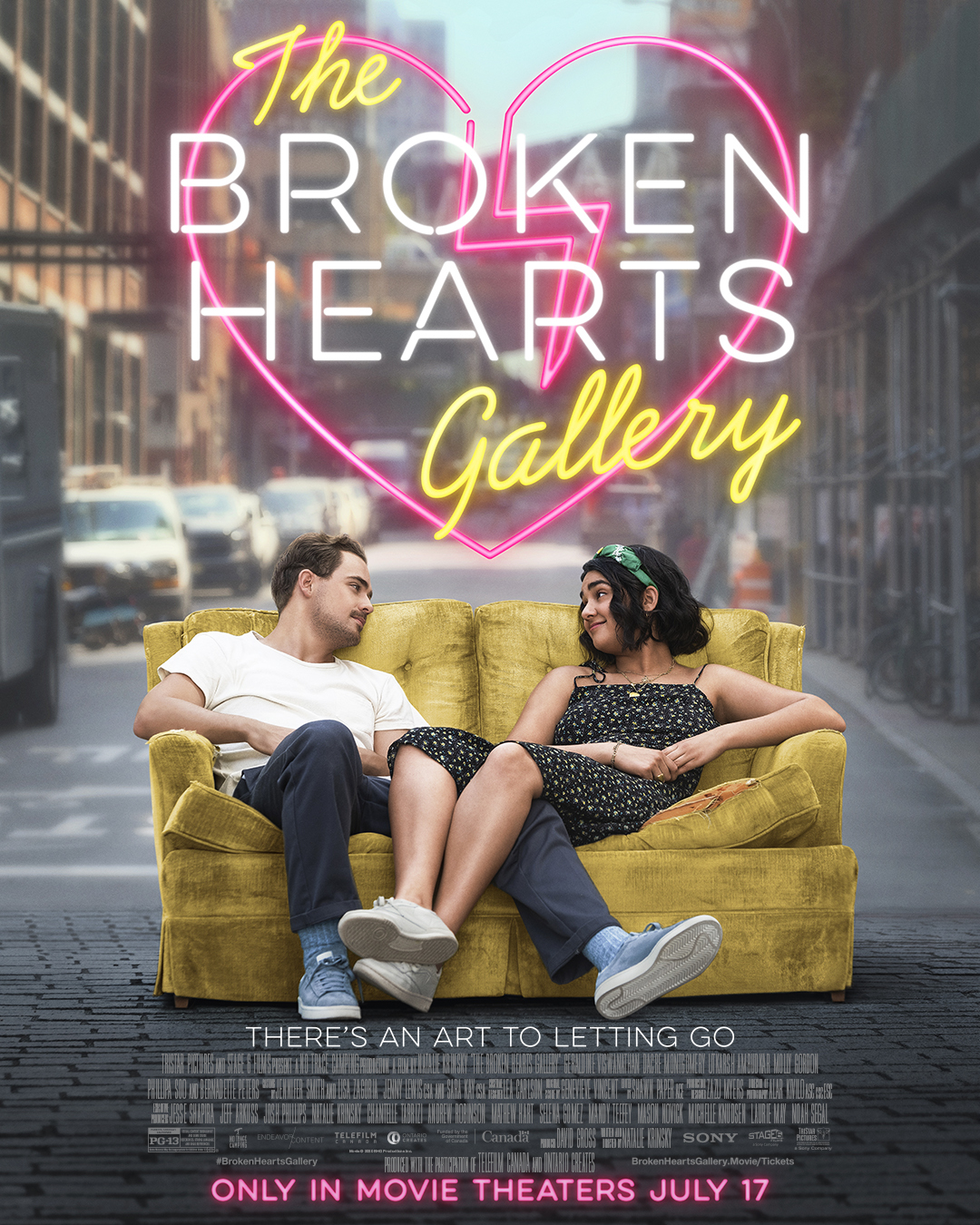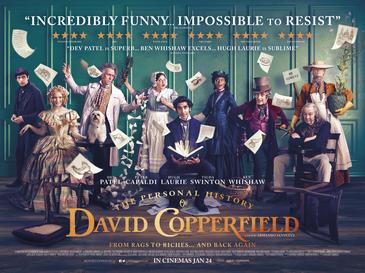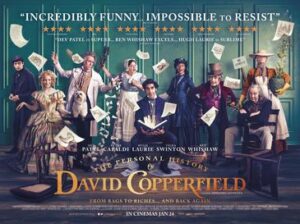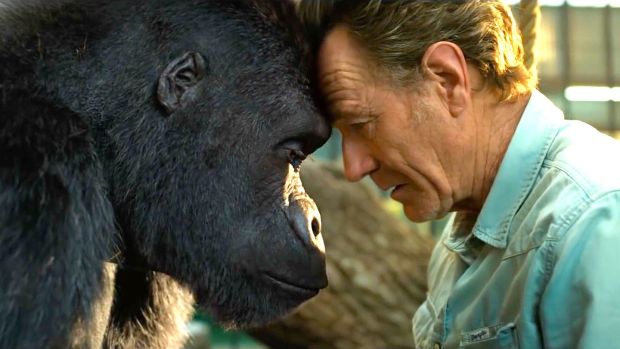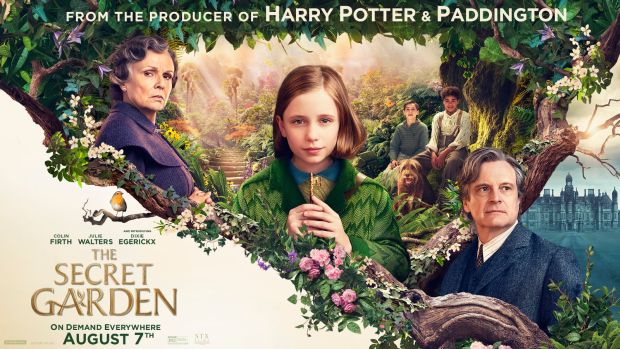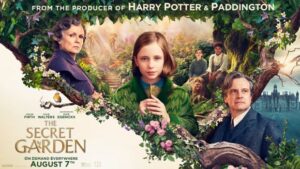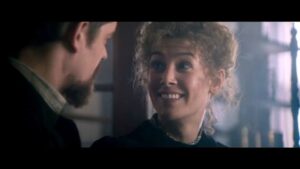The Broken Hearts Gallery
Posted on September 10, 2020 at 1:00 pm
B +| Lowest Recommended Age: | Mature High Schooler |
| MPAA Rating: | Rated PG-13 for sexual content throughout and some crude references, strong language and drug references |
| Profanity: | Some strong and explicit language |
| Alcohol/ Drugs: | Alcohol, drug references |
| Violence/ Scariness: | Emotional confrontations, reference to a sad offscreen death |
| Diversity Issues: | Exceptionally inclusive |
| Date Released to Theaters: | September 11, 2020 |
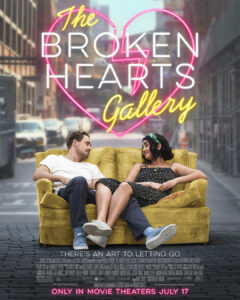
All credit to Krinsky, but the heart of this movie in every way is the adorable Geraldine Viswanathan (“Blockers,” “Bad Education”) as Lucy, who is every bit as endearing as any of the queens of romantic comedies from Doris Day to Meg Ryan and all of the various Jennifers and Jessicas with quippy best friends usually played by Judy Greer. Speaking of the essential role of the quippy best friends, A+ for the two in this film, played by powerhouses-who-deserve-their-own romantic comedies, “Hamilton’s” Phillipa Soo and “Booksmart’s” Molly Gordon as Lucy’s BFFs, support system, and Greek chorus.
Lucy has two passions. The first is art, especially the not-yet-discovered artists with something new to bring to the world. She has a low-level job in a high-level art gallery owned by a “Devil Wears Prada”-style terrifying boss lady, the film’s only under-written character and her name is too-on-the-nose Eva Woolf for goodness sakes. On the considerable other hand, she is played by Broadway legend Bernadette Peters. Lucy’s other passion is holding on to mementos and artifacts of failed relationships, which are more important to her than the relationships themselves. When she loses her current boyfriend, a colleague in the gallery (Utkarsh Ambudkar as Max) and her job in the same #epicfail, she tipsily climbs into a car she mistakes for a Lyft, the handsome guy who owns the car (Dacre Montgomery as Nick) decides to drive her home, and we can check off “meet cute” on our romantic comedy bingo card. Other boxes are checked off nicely, too as the couple bicker, develop grudging respect and then affection as they accomplish something together, get close, get less close, and then, well you know. Plus karaoke, exes, and, of course, wandering through an open market.
Here is what is not on the bingo card but should be from now on: like “The Personal History of David Copperfield,” this movie is casually, un-self-consciously, and joyfully inclusive in a way that feels bountiful, generous, and heart-warming. Krinsky does not waste time worrying about whether related characters look like they share DNA or have names to match their ethnicity, or whether a romantic comedy lead should be blonde and blue-eyed and size 00, and that allows us the luxury of freedom not to worry about it either. Romantic comedies may be aspirational with a dream of perfect understanding and intimacy and witty dialogue, but this one is understatedly aspirational on a whole other level.
Just as revolutionary, this movie gives us a romantic comedy heroine who is not insecure and clutzy. Lucy has issues but she also has confidence and a sense of where she is going. She is coping with loss in some ways that are more constructive than others, like everyone else, but understanding that is what life and movies are all about.
Nick is trying to open a boutique hotel, still under construction and running out of money. He impulsively hangs one of Lucy’s mementos, Max’s tie, on a nail and that inspires her to create the title art installation, which becomes hugely popular, and hugely cathartic for the broken-hearted people who come by to share their stories. The loss of a love is, Lucy says, the loneliest feeling. Sharing the story makes it less lonely. So does a charming romantic comedy that opens up all kinds of new possibilities, including looking for more from its talented writer/director and cast.
Parents should know that this film has some strong language and explicit sexual references that might earn an R if it were not a comedy. Characters drink and get tipsy and there is a drug reference.
Family discussion: What mementos are meaningful to you and why? What art installation can you create?
If you like this, try: “The Personal History of David Copperfield”

